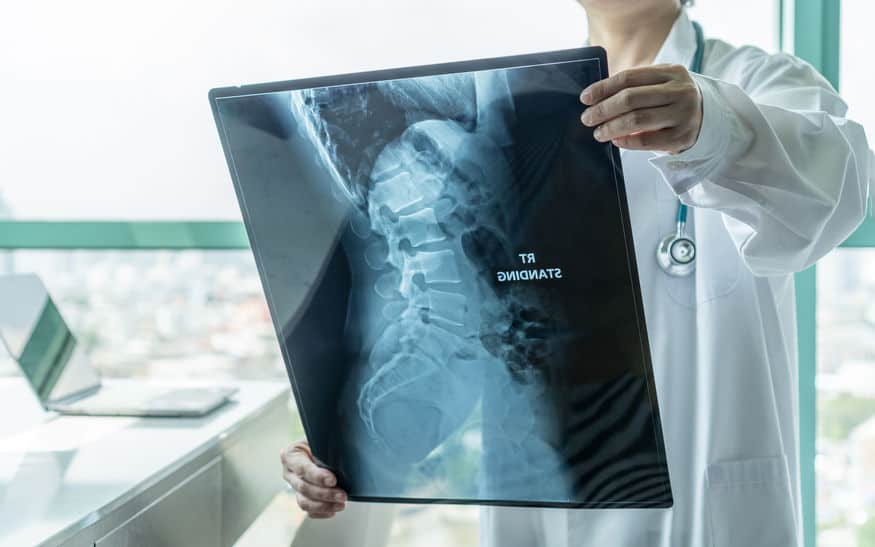Common Spinal Surgeries
There are a number of surgical procedures that can be performed to repair or minimize the damage after spinal cord injury.
Some of the most common spinal surgeries include the operations highlighted below

This is a procedure that removes any herniated material from nerve tissue in the neck. This can immediately relieve aches and pains.
An anterior cervical discectomy involves creating a small incision in the front of the neck. From there, surgeons will remove the disk bone spurs that have herniated. This surgery usually has a quick recovery period.
Today’s medical experts can create an artificial disc, which can be implanted into the spine to replace a damaged disc.
Artificial discs can be made of metal or a plastic-like biopolymer material. Some artificial disks use a combination of metal and plastic.
Disc replacement surgery can be complex, and surgeons will usually make an incision on the front of body, making it easier to see the other side of the spine. The bad disc is removed and the replacement will be put in its place.


Although the most common treatment for a compression fracture is pain medication and rest, surgery might be necessary in some case. The most common surgery for a compression fracture is a thoracic fusion surgery.
If your healthcare team elects to conduct a surgery, the surgeon will use one following approaches:
This is the most common to treat a herniated disc with surgery. A discectomy is begins with an incision down the center of the back, over the area of the herniated disc. The surgeon will push any muscles aside in order to see the back of the affected vertebrae. A small opening will be made between the two vertebrae where the disc has ruptured. This tiny hole allows the surgeon to see the spinal canal, which holds nerve tissue.
The surgeon will then carefully move the nerve roots side in order to remove the disc that has ruptured. This procedure can relieve any pressure and irritation on the spine.


A microdiscetomy is similar to a discectomy, but it has a smaller incision. This allows for a faster recovery, and there is less damage to the spine.
A surgeon will use a microscope to perform this surgery. Once the patient’s muscles are pushed aside and the vertebra can be viewed in the microscope, the rest of the operation is the same as a discectomy.
Similar to an anterior fusion, a bone graft will be taken from another part of the body and placed on the backside of the vertebrae. As the body begins to heal, this graft will become part of vertebrae, creating one solid piece of bone. Fusion surgeries are often required when there is a cervical fracture or dislocation. These may also correct deformities in the neck.


Anterior cervical spinal fusion surgeries may be done in concert with a discectomy. Similar to a posterior fusion, an anterior fusion will place a small piece of bone in between two vertebrae. Following the surgery, the patient may need to wear a cervical collar or brace for a few weeks to assist in the recovery process.
Lumbar fusion surgery aims to relieve any pain the patient has been suffering due to a disease or herniation.
The fusion process could take up to 18 months to complete, following a spinal fusion surgery.
A lumbar fusion surgery will remove the disc and place a bone graft between the vertebrae, where it will eventually fuse to the surrounding vertebrae to stop any abnormal motion.


A posterior cervical discectomy aims relieve pressure on one or more nerve roots. These are often done to relieve pain in the neck, arms, and legs.
An epidural steroid injection provides the patient some relief from lower back pain, and from some types of neck pain. Once the medication is injected, it will coat the nerve roots and the outside lining of the facet joints of the spine, allowing them to heal.
The Barnes Firm 1-(800) 800-0000

Disclaimer | Privacy Policy | Accessibility Statement | ATTORNEY ADVERTISING. Past results do not guarantee future outcomes. | © 2021 The Barnes Firm